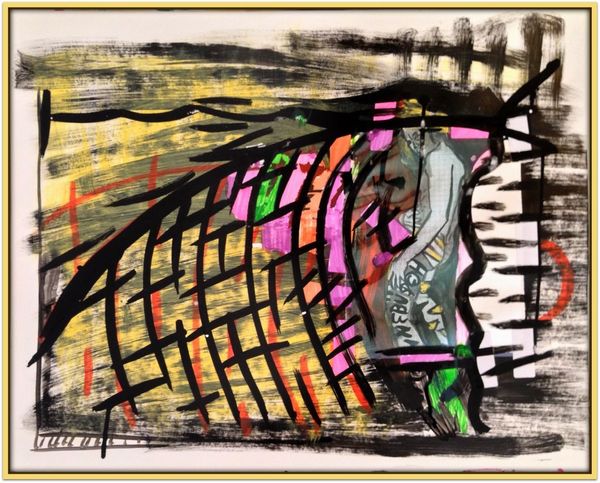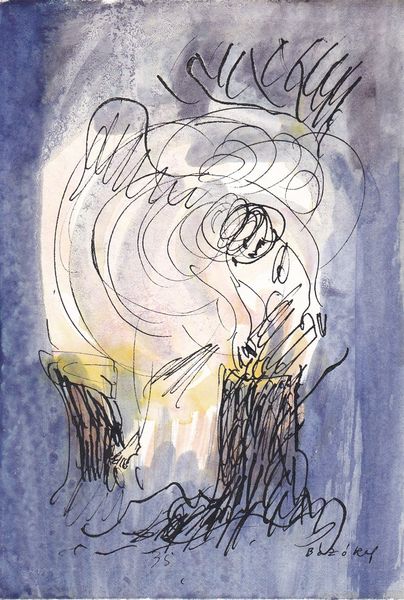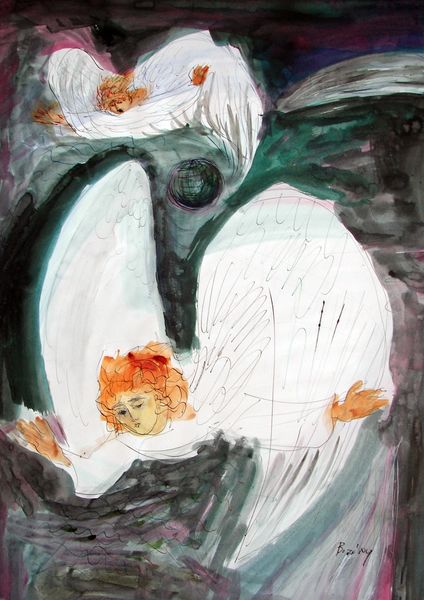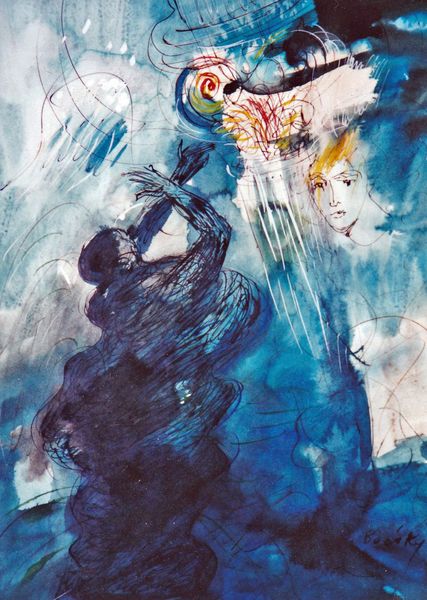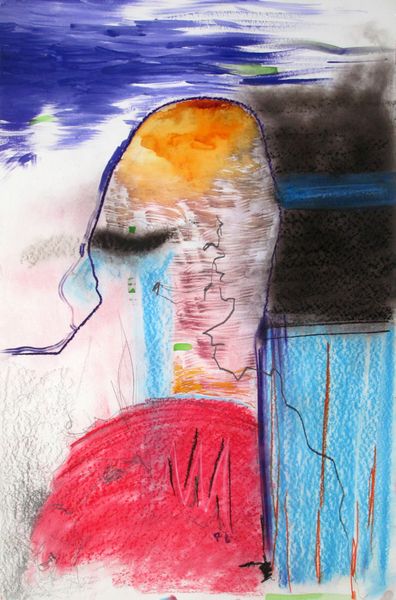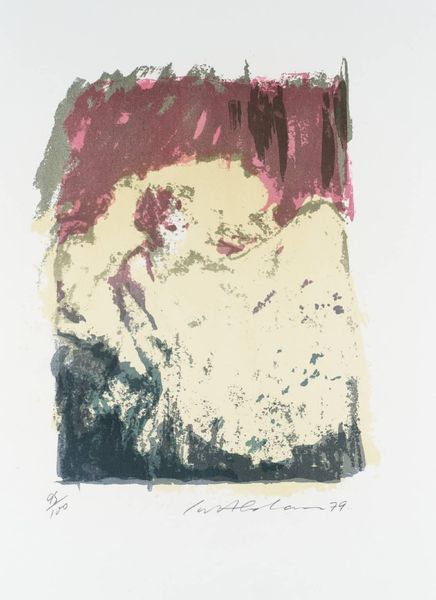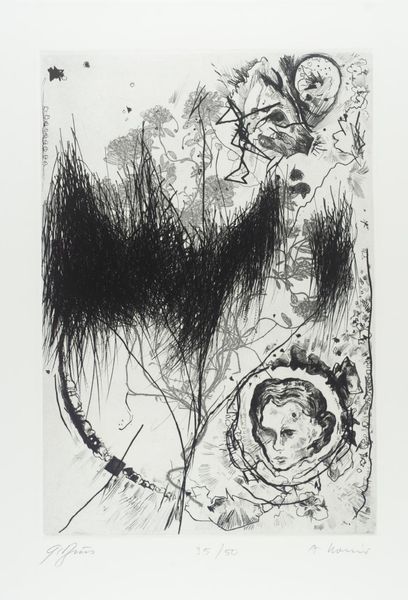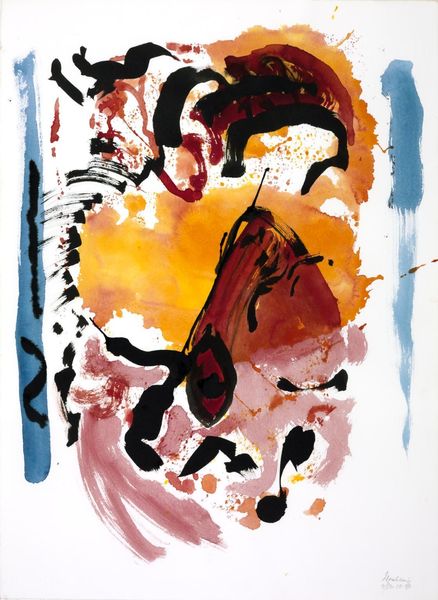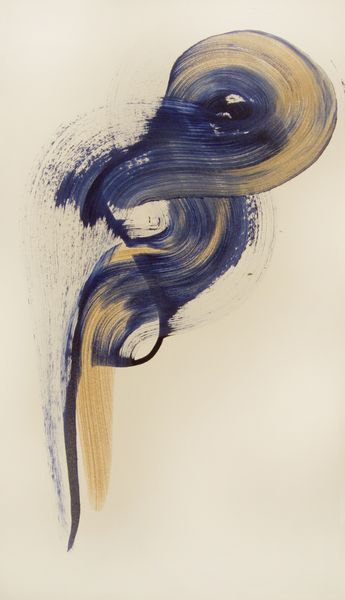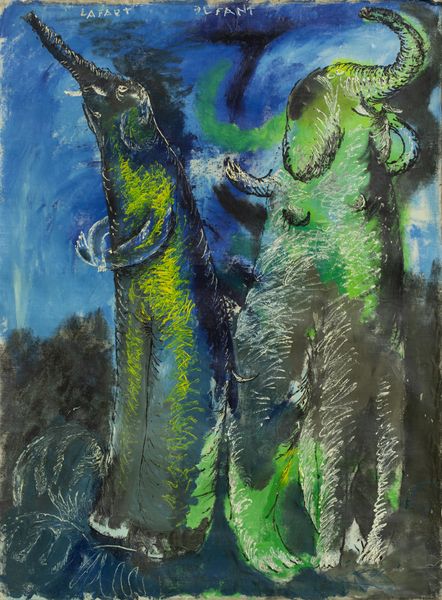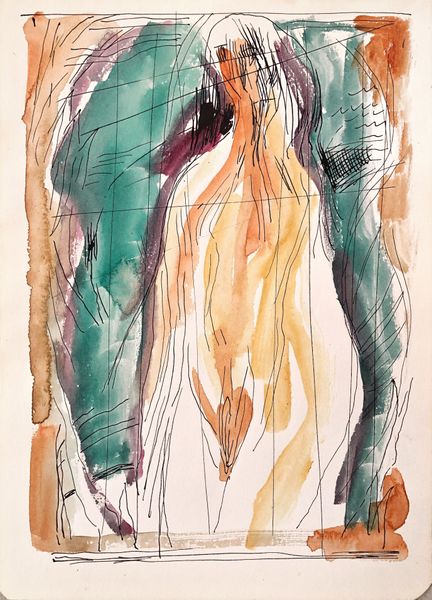
painting, watercolor
#
painting
#
bird
#
figuration
#
watercolor
#
naive art
#
watercolour illustration
Dimensions: 27.94 x 15.24 cm
Copyright: Rudolf Láng,Fair Use
Editor: Here we have Rudolf Láng's "Hornbill," a watercolor painting from 1956. The textures are quite striking, almost rough despite the fluidity of watercolor. It's making me think about surface and depth. What catches your eye? Curator: Immediately, I consider the raw materiality. It’s not just watercolor, but how it’s applied – seemingly fast, gestural, with visible drips and pools of pigment. The artist emphasizes the physical properties of the medium. The paper support is integral to the overall piece as the negative space left by the paper is used as part of the representation. Do you think that the materiality references folk art traditions or non-art contexts such as illustrations from books and magazines that reflect industrialised techniques of production? Editor: That’s a good point. I see that the loose handling could be viewed in tension with the more traditional medium of watercolour. Curator: Exactly. Look at the contrast between the dark washes and delicate lines. It's not just representation; it's about the *doing*, the making. How does that immediacy influence your interpretation? Editor: I suppose it forces me to think less about the hornbill itself and more about Lang's process, like his mark-making. The dark plumage almost looks collaged or patchworked, making it resemble material, like it’s constructed from scraps of colour. I was preoccupied with symbolism. I should have considered the physical effort involved in its making, the selection of materials, the way watercolour pigment operates… Curator: And, from that labour comes a very striking composition and a reminder that artistic creation is an activity, not just an idea. Editor: So, paying attention to materials and the act of making is fundamental, altering how we understand the art. I appreciate seeing how everyday processes influence perception of art.
Comments
No comments
Be the first to comment and join the conversation on the ultimate creative platform.
